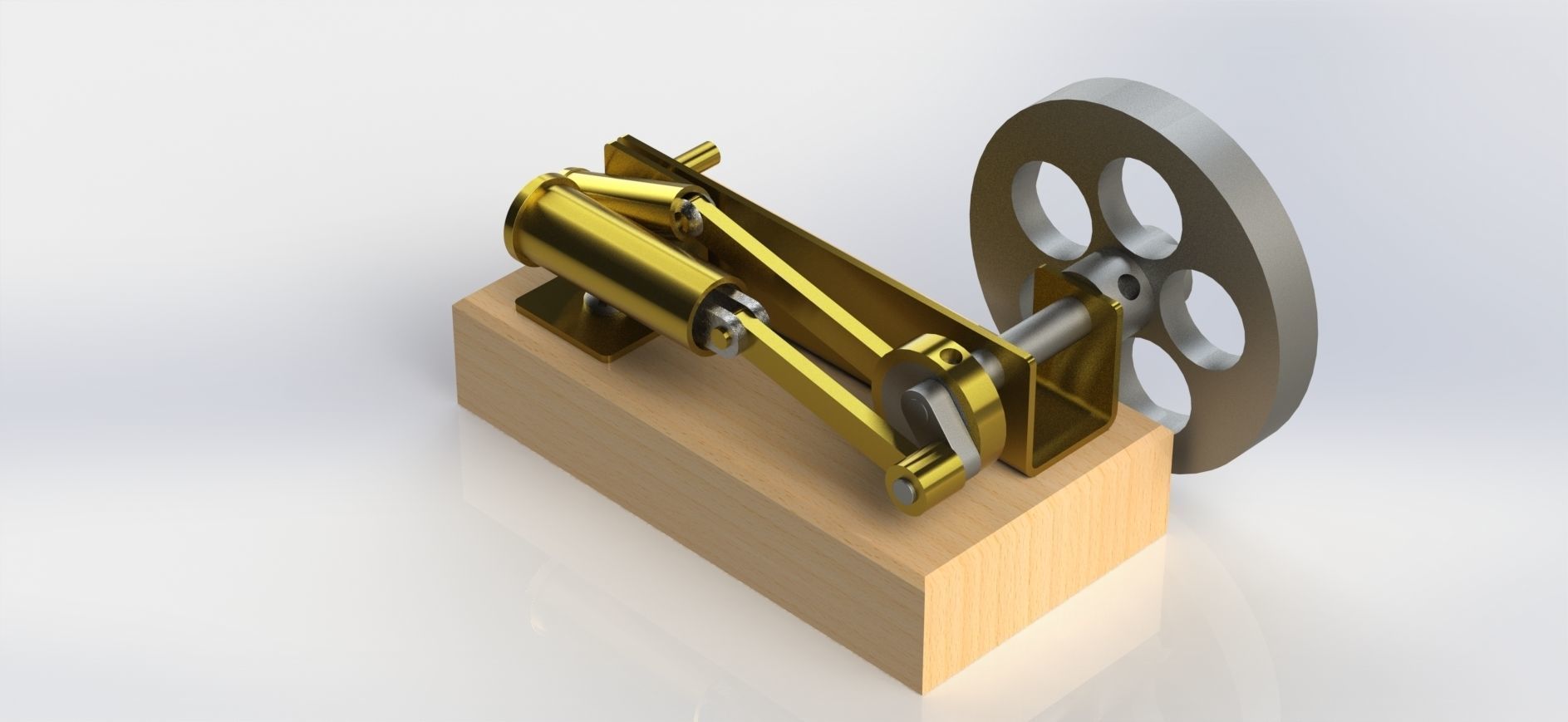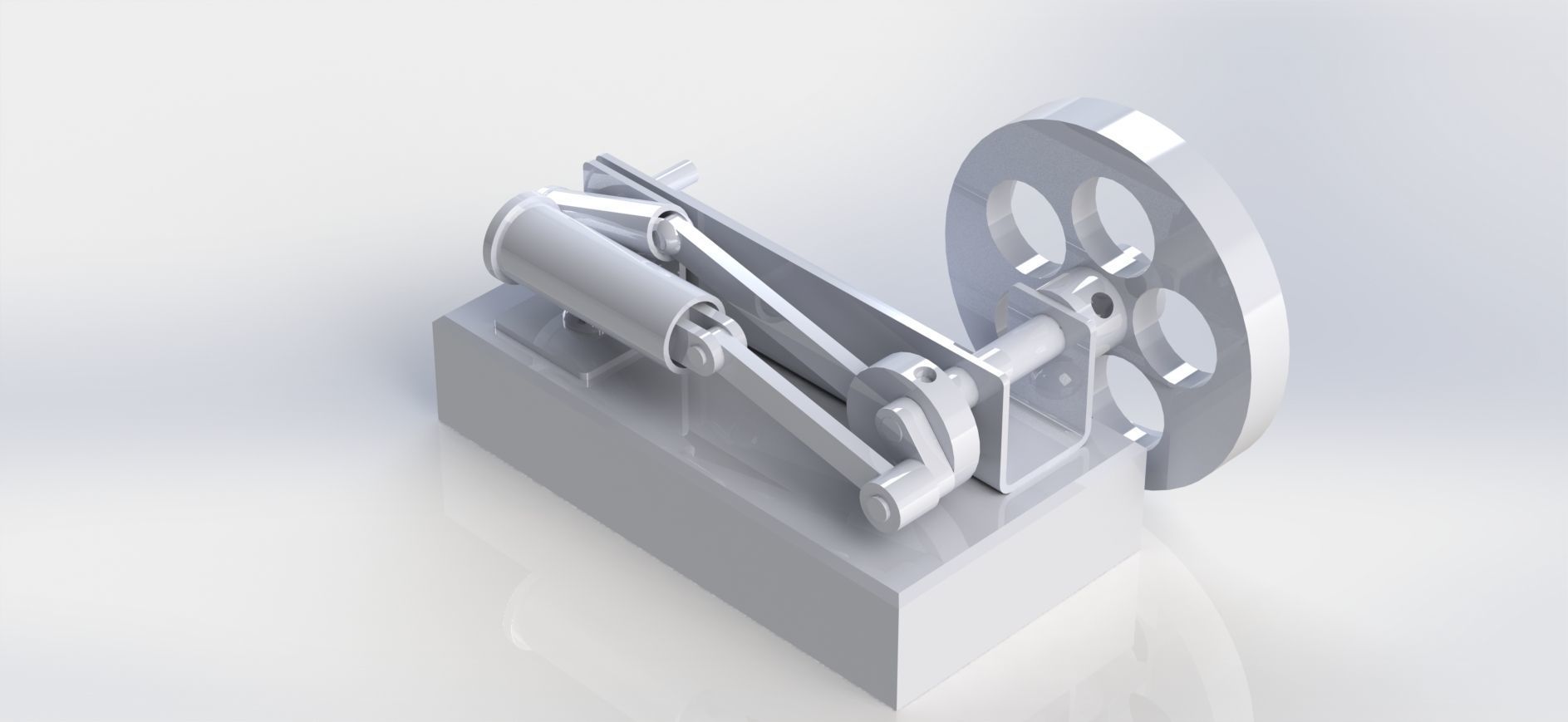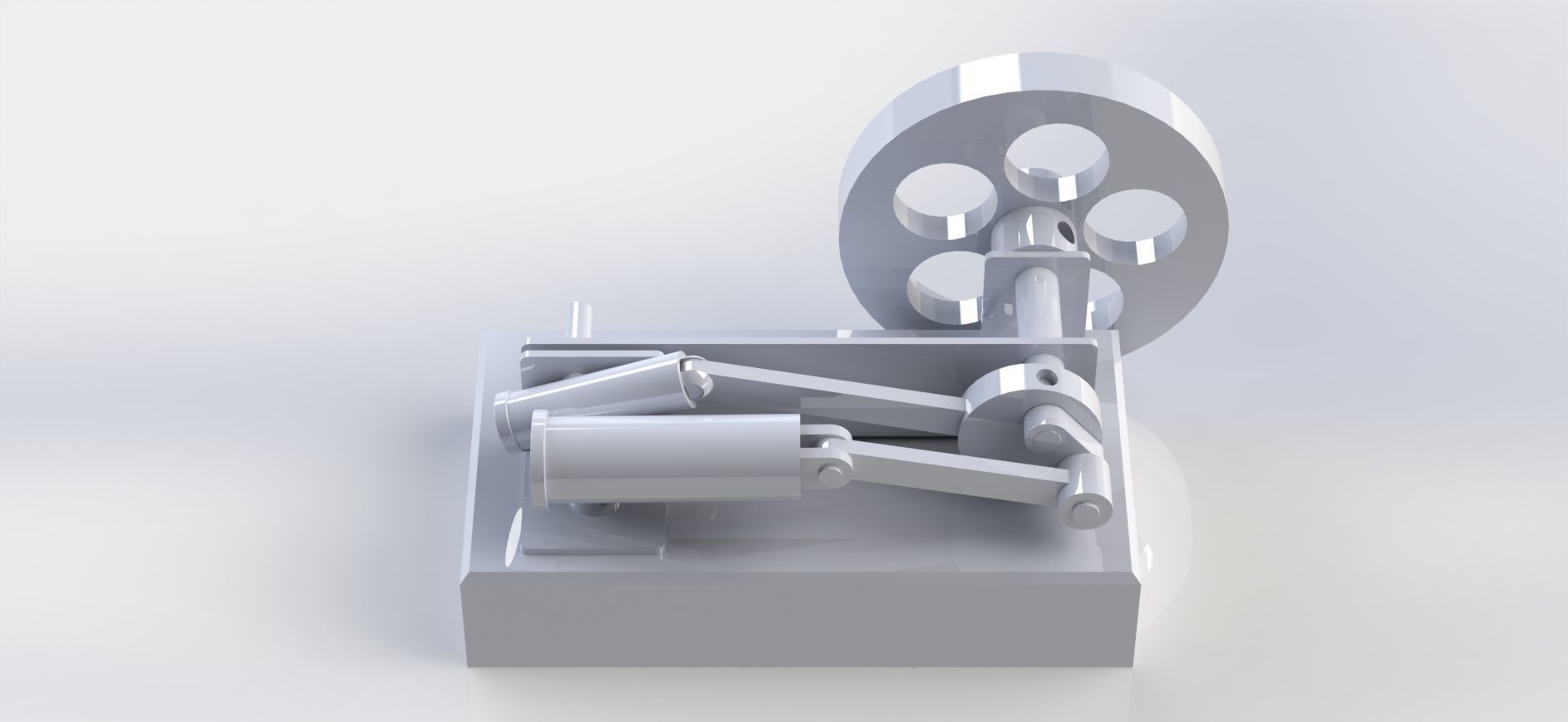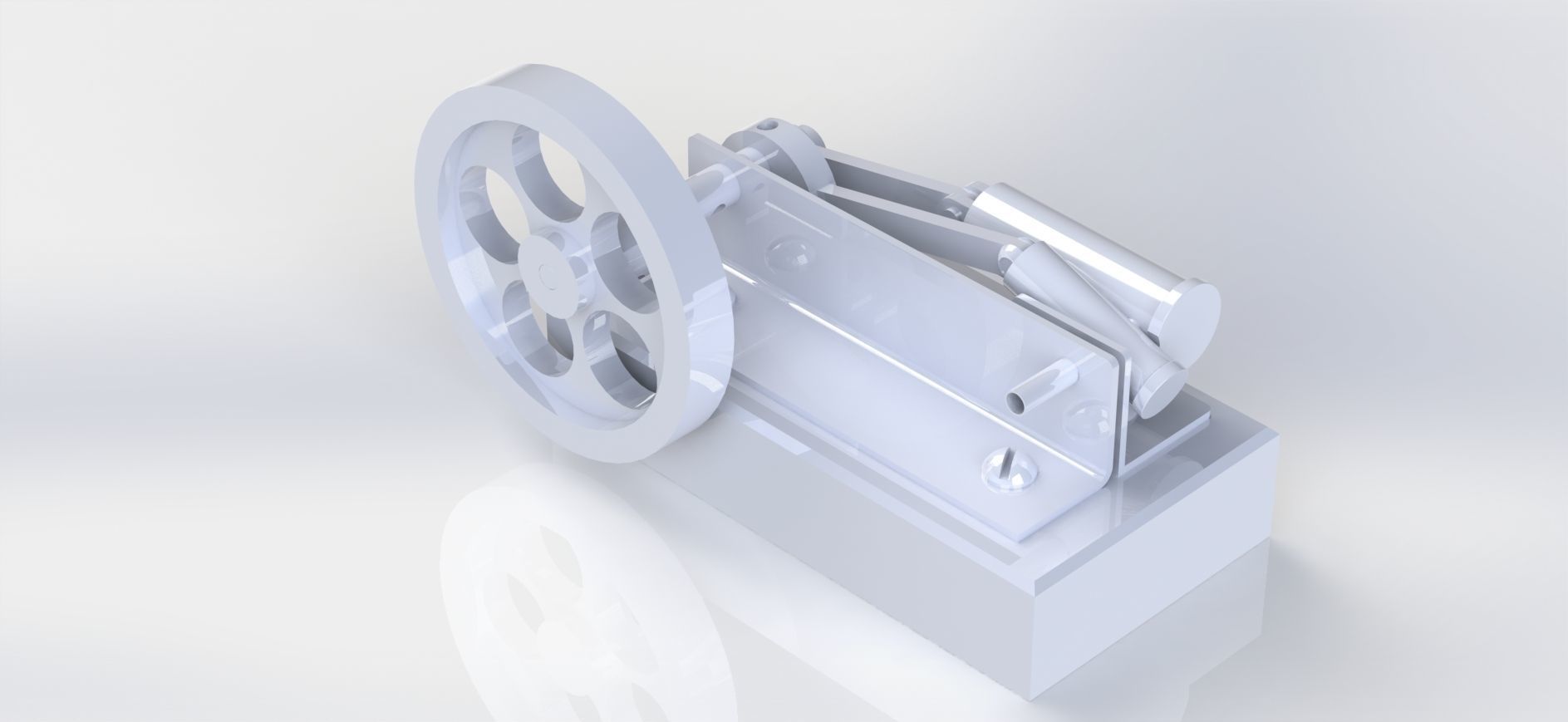
SIMPLE HORIZONTAL STEAM ENGINE 3D model
SIMPLE HORIZONTAL STEAM ENGINE SOLIDWORK MOTION STUDY VIDEO #letsmakeitcad #SolidWorks
A simple horizontal steam engine is a basic type of steam engine with a horizontal orientation. Here's a general description of its components and operation:
Components:
Cylinder: The cylinder is the primary housing where the energy of steam is converted into mechanical work. It is a cylindrical chamber made of metal. The cylinder can have a liner made of a wear-resistant material, which the piston moves inside. The inner surface of the cylinder needs to be smooth to ensure proper sealing and minimize friction.
Piston: The piston is a cylindrical or disc-like component that fits snugly inside the cylinder. It moves back and forth within the cylinder, driven by the pressure of steam. The piston is usually sealed with piston rings to prevent steam leakage around the edges.
Crankshaft: The crankshaft is a rotating shaft that translates the reciprocating (back-and-forth) motion of the piston into rotational motion. It's connected to the piston via a connecting rod. The crankshaft's rotation is used to power machinery or generate electricity.
Connecting Rod: The connecting rod is a rod that links the piston to the crankshaft. One end of the connecting rod is connected to the piston, and the other end is connected to the crankshaft. As the piston moves back and forth, the connecting rod translates this motion into rotational movement at the crankshaft.
Flywheel: The flywheel is a heavy, disc-shaped wheel attached to the crankshaft. It serves as a momentum reservoir, storing energy during the power stroke of the piston and releasing it during the exhaust stroke. The flywheel's inertia helps smooth out the engine's motion, preventing abrupt speed changes.
Valves: Steam engine valves control the flow of steam into and out of the cylinder. There are typically two types of valves in a steam engine:
Steam Inlet Valve: Opens to allow steam to enter the cylinder during the intake stroke. Exhaust Valve: Opens to release used steam from the cylinder during the exhaust stroke.
Valve Mechanism: The valve mechanism includes the linkage and cams that control the movement of the valves. It ensures that the steam inlet valve opens and closes at the right times to admit steam, and the exhaust valve opens and closes to release used steam.
Governor (Optional): In more advanced designs, a governor can be used to regulate the engine's speed by adjusting the amount of steam entering the cylinder. It's a mechanical feedback system that maintains a constant speed under varying loads.
Lubrication System: Steam engines require lubrication to reduce friction and wear between moving parts. An oiling system is often included to deliver lubricating oil to critical components like the piston, cylinder, and bearings.
Boiler (External Component): While not part of the engine itself, the boiler is a vital external component. It generates steam by heating water using a heat source like coal or wood. The steam produced in the boiler is then piped to the engine's cylinder.
Each of these components plays a critical role in the operation of a simple horizontal steam engine, converting the energy of steam into useful mechanical work. The arrangement and interaction of these components determine the engine's efficiency, power output, and reliability. Working:
Steam Generation: The process begins with steam generation in a separate boiler. Water is heated using a heat source such as burning coal or wood. The heat causes the water to boil and turn into steam under high pressure.
Steam Inlet Valve Opens: At the appropriate moment in the engine's cycle, the steam inlet valve opens, allowing high-pressure steam to enter the cylinder.
Intake Stroke (Power Stroke): The steam enters the cylinder and pushes the piston away from the valve end. This is known as the intake or power stroke. As steam expands, it does work on the piston, converting its energy into mechanical motion.
Valve Closes and Exhaust Valve Opens: Once the piston reaches the end of its power stroke, the steam inlet valve closes, and the exhaust valve opens.
Exhaust Stroke: As the exhaust valve opens, the used steam is released from the cylinder into the atmosphere. The piston is pushed back toward the valve end of the cylinder, driven by the flywheel's momentum.
Piston Returns: As the piston moves back, the exhaust valve eventually closes. The piston's motion is linked to the crankshaft through the connecting rod, which converts the back-and-forth motion into rotational motion.
Flywheel's Role: The flywheel stores the excess energy generated during the power stroke and releases it during the exhaust stroke. This helps maintain consistent rotational motion and reduces jerky movements.
Steam Inlet Valve Opens Again: As the piston reaches the end of its return stroke, the steam inlet valve opens once more, allowing steam to enter for the next power stroke.
Repeated Cycle: The cycle repeats continuously as long as the engine is running and steam is being supplied. The coordinated opening and closing of the valves, along with the piston and crankshaft's motion, ensure a smooth and consistent power output.
Regulation (Governor - Optional): In engines equipped with a governor, the device automatically adjusts the amount of steam entering the cylinder to maintain a relatively constant speed, even under varying loads.
Lubrication: Throughout the process, lubrication is essential to reduce friction and wear between moving parts. An oiling system delivers lubricating oil to critical components, ensuring smooth operation and minimizing heat buildup.
It's important to note that while this description provides a general overview of the working process, the actual operation can vary based on factors such as valve timing, steam pressure, and specific design features. Simple horizontal steam engines were an integral part of various industries during the Industrial Revolution, providing mechanical power for a wide range of applications before more advanced technologies took over. Advantages:
Simplicity: A basic horizontal steam engine is relatively simple to understand and construct. Versatility: This type of engine can be used in various applications, including pumping water, generating electricity, and powering machinery. Disadvantages:
Efficiency: Basic horizontal steam engines might not be as efficient as more advanced designs, as they lack features that optimize steam usage. Maintenance: Simplicity can lead to wear and tear, and maintenance might be required more frequently. Horizontal steam engines were widely used during the Industrial Revolution and played a significant role in powering factories, mills, and other industrial applications. While they have been largely replaced by more advanced technologies today, they remain an important part of engineering history. If you're interested in learning more or working with such an engine, studying historical references and steam engine principles is recommended.







